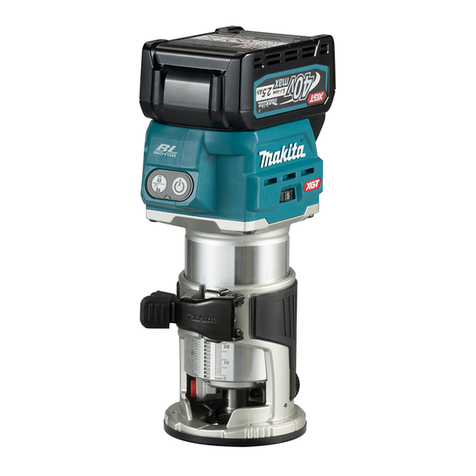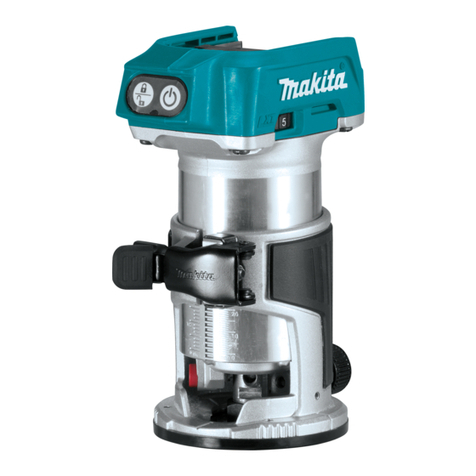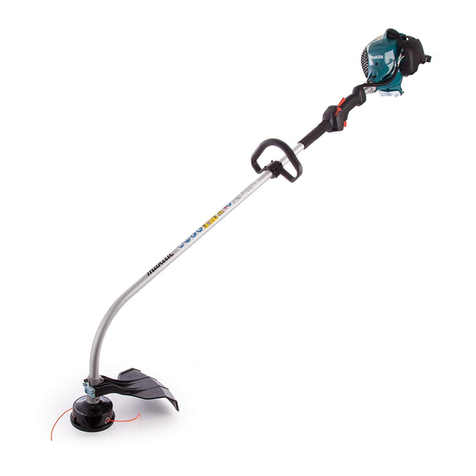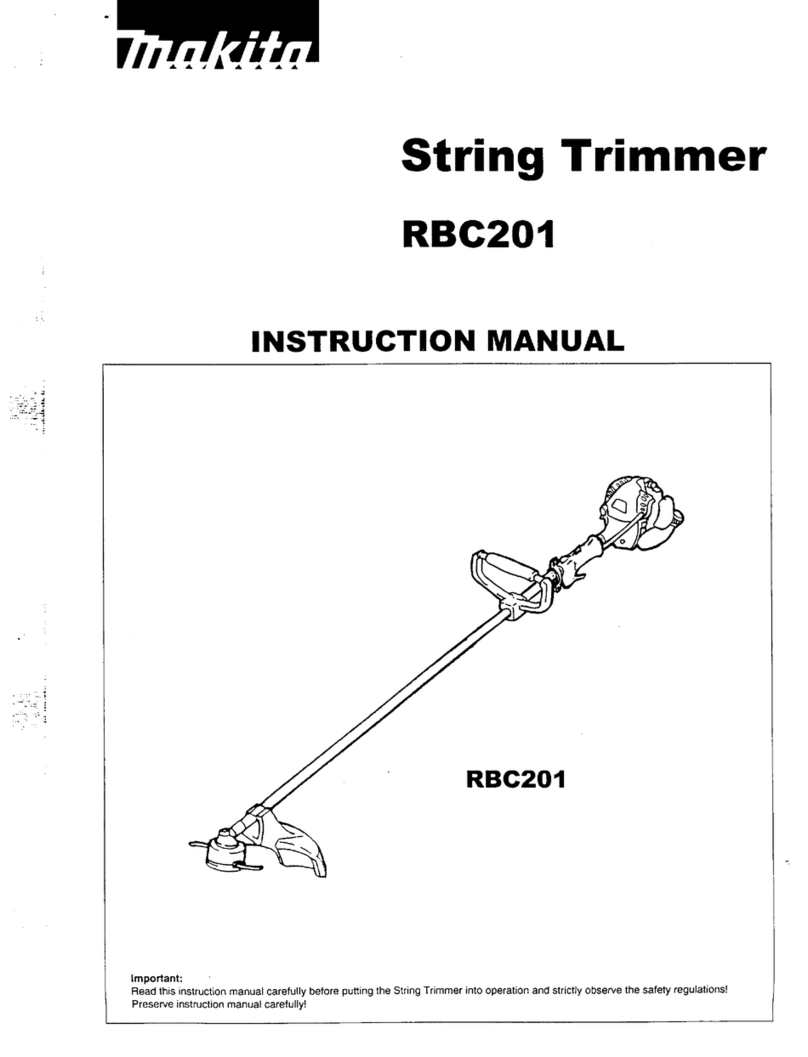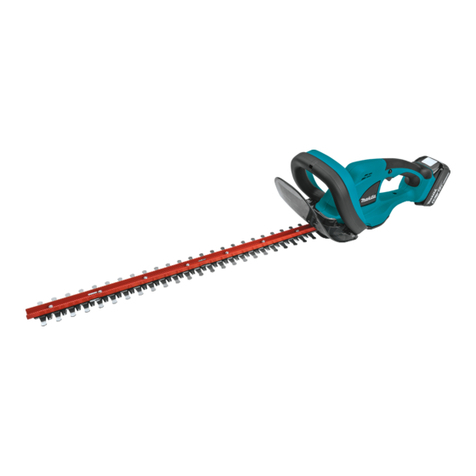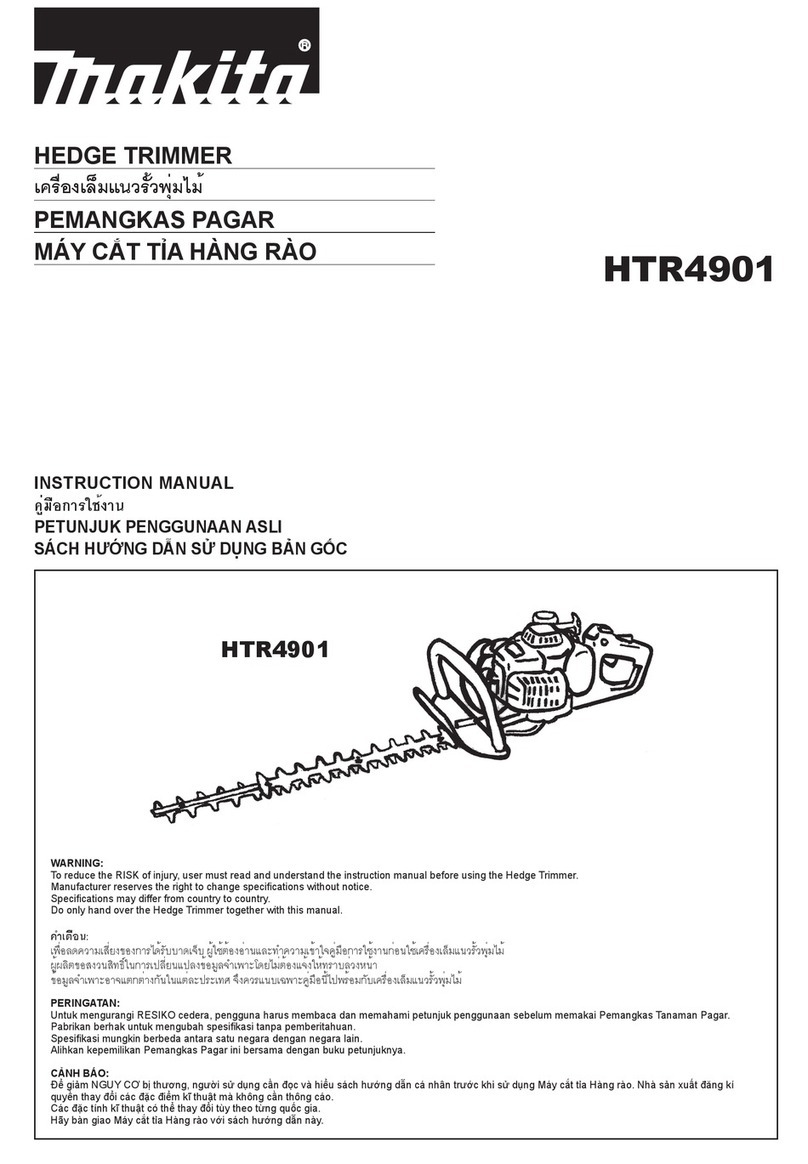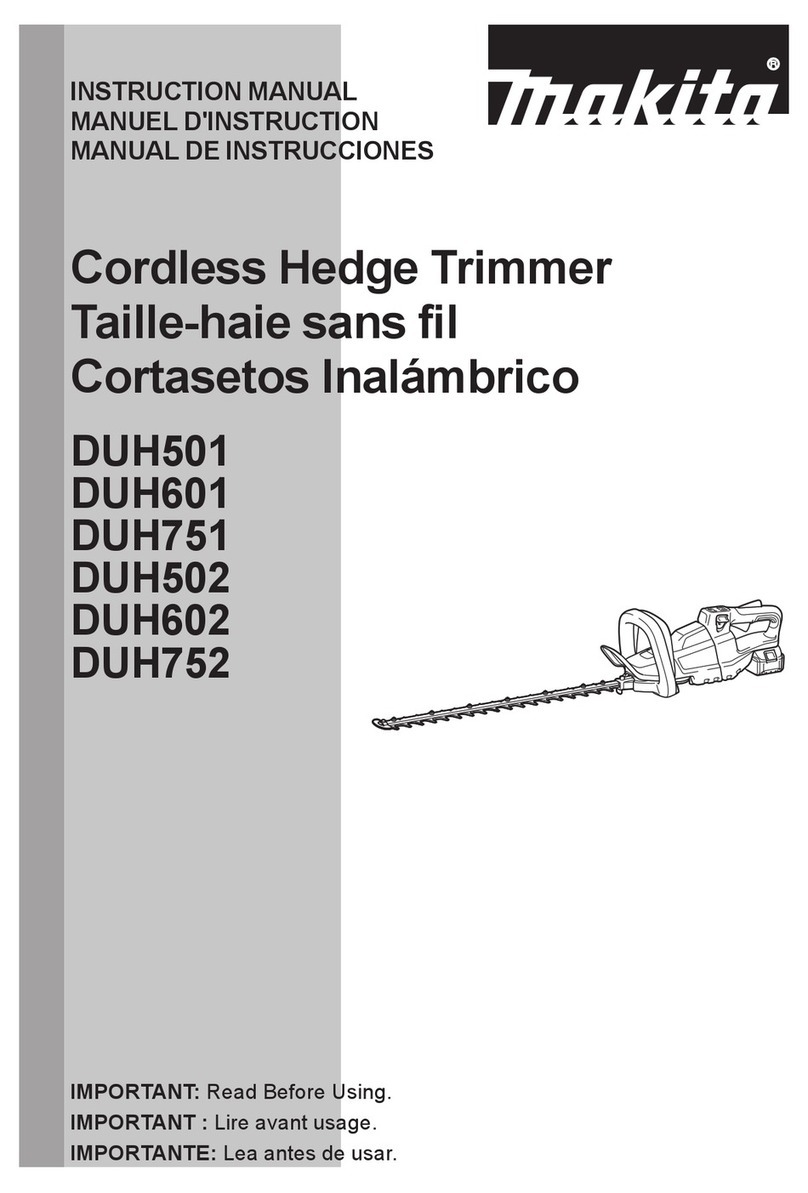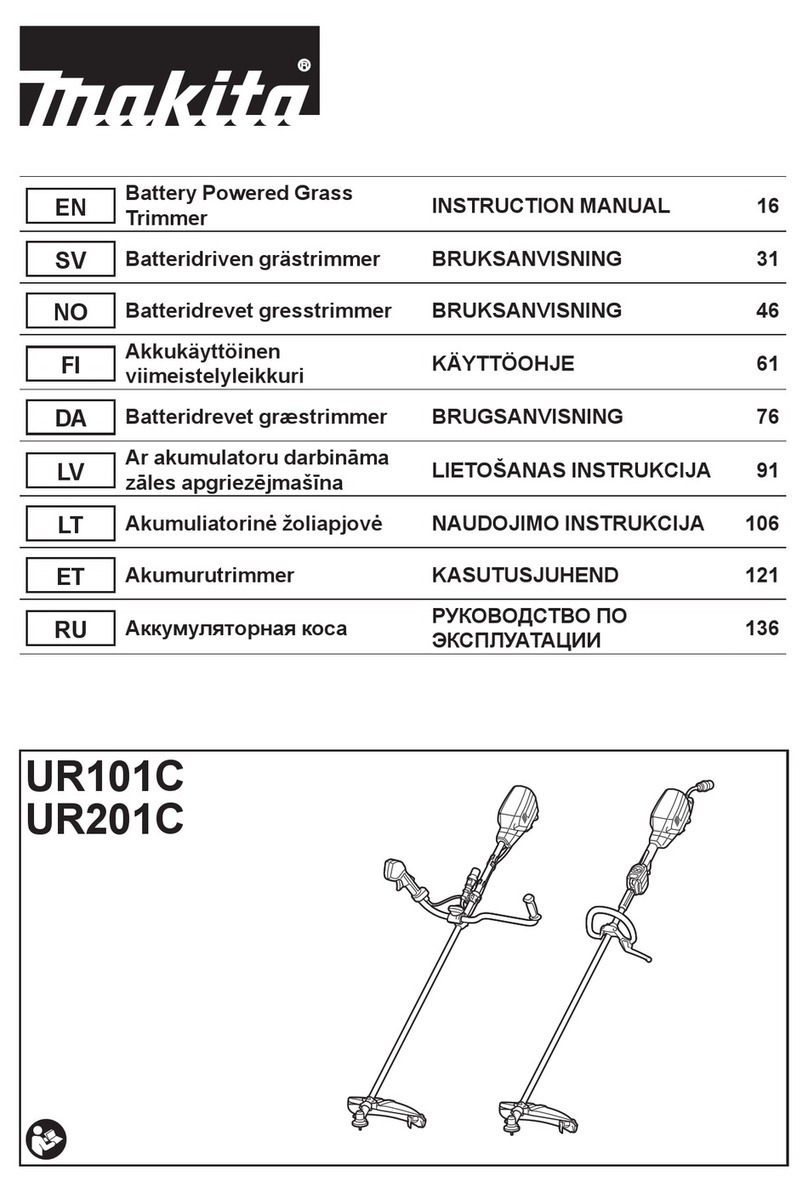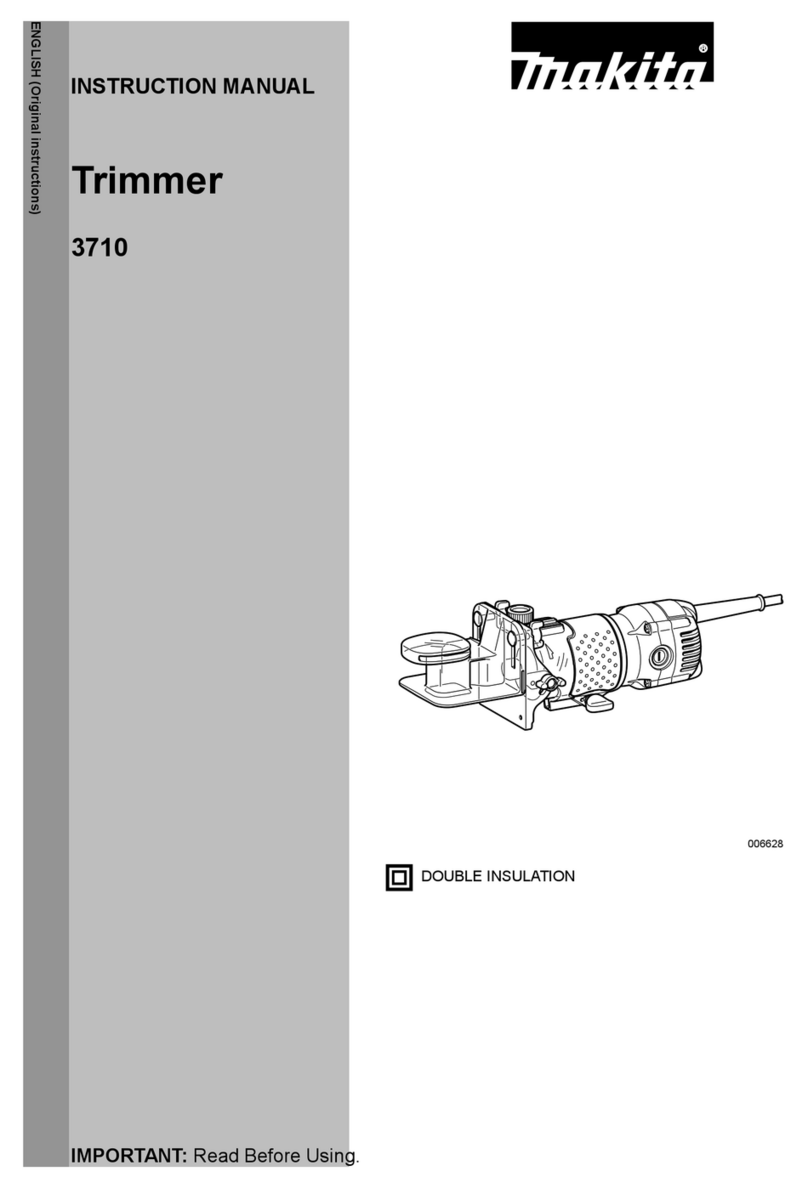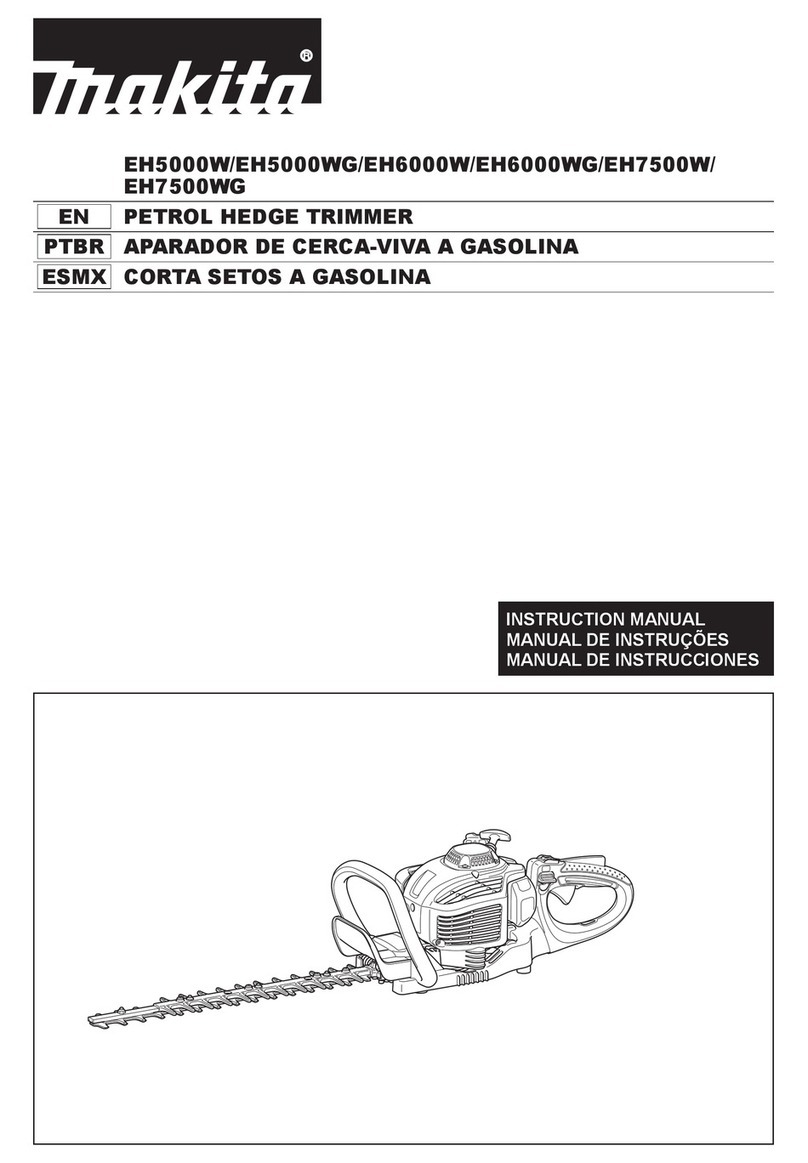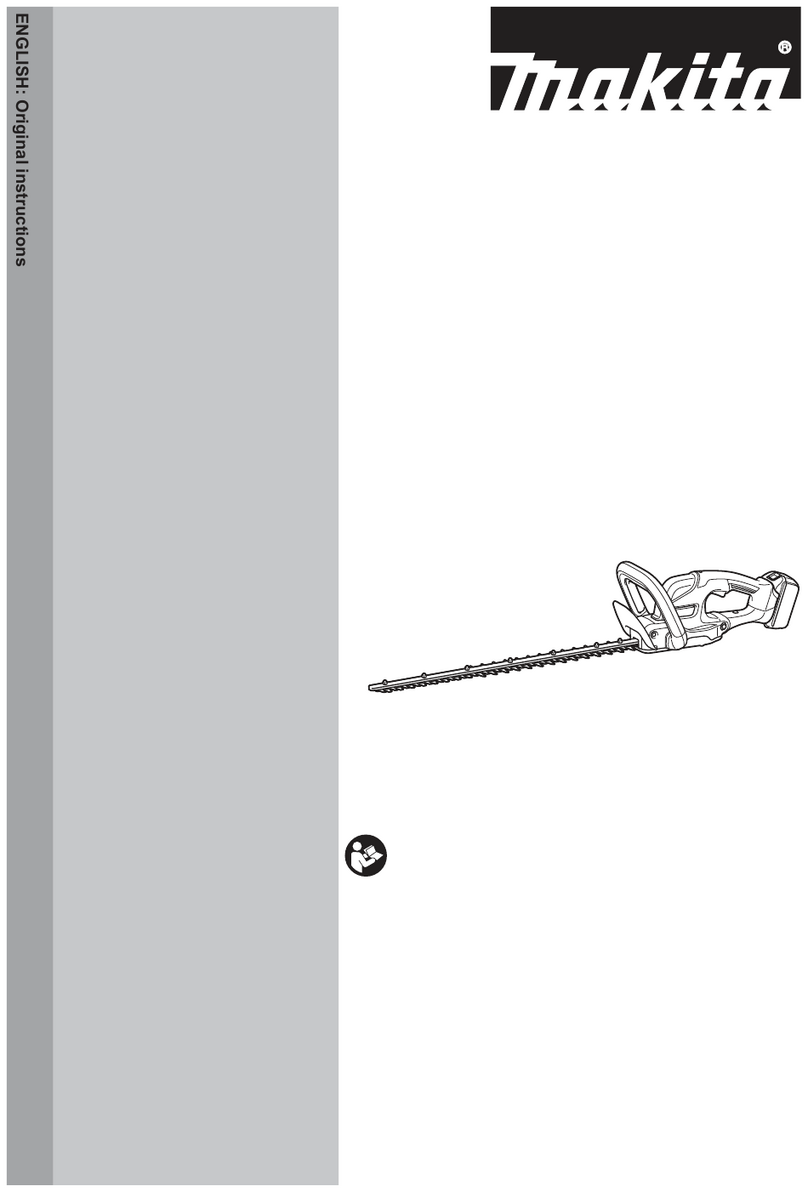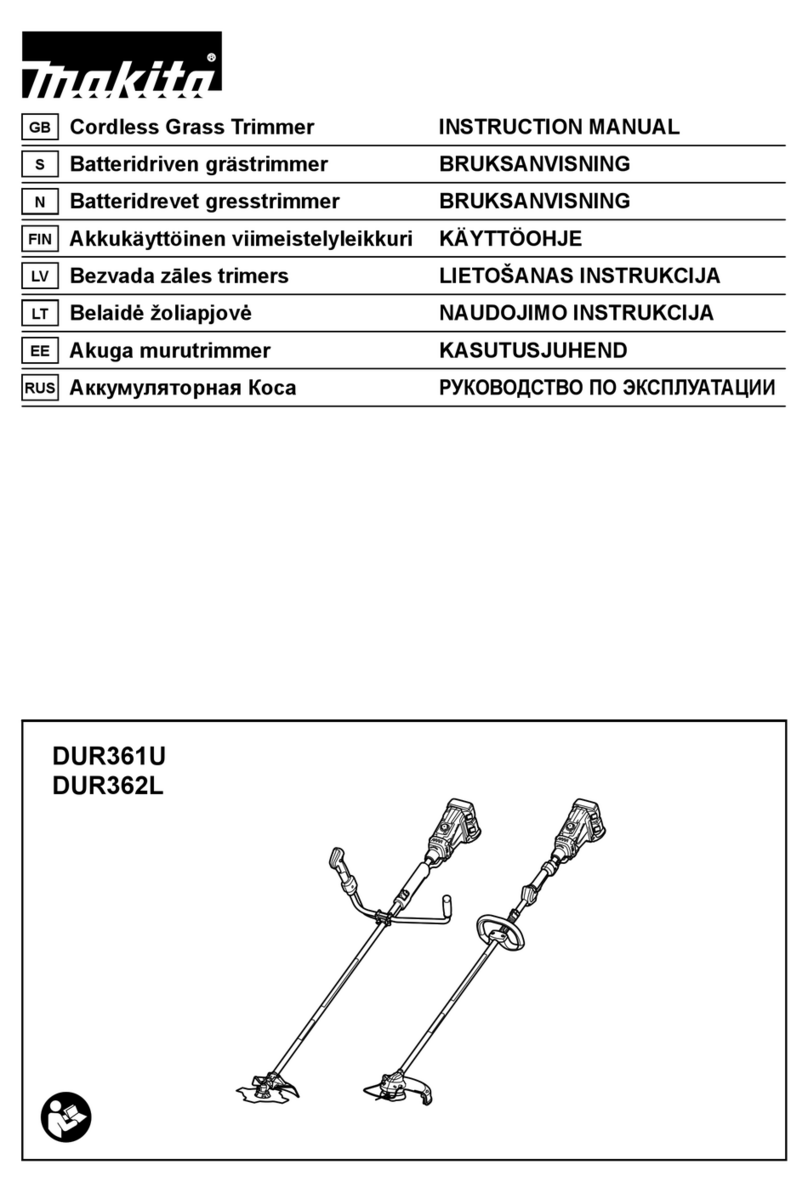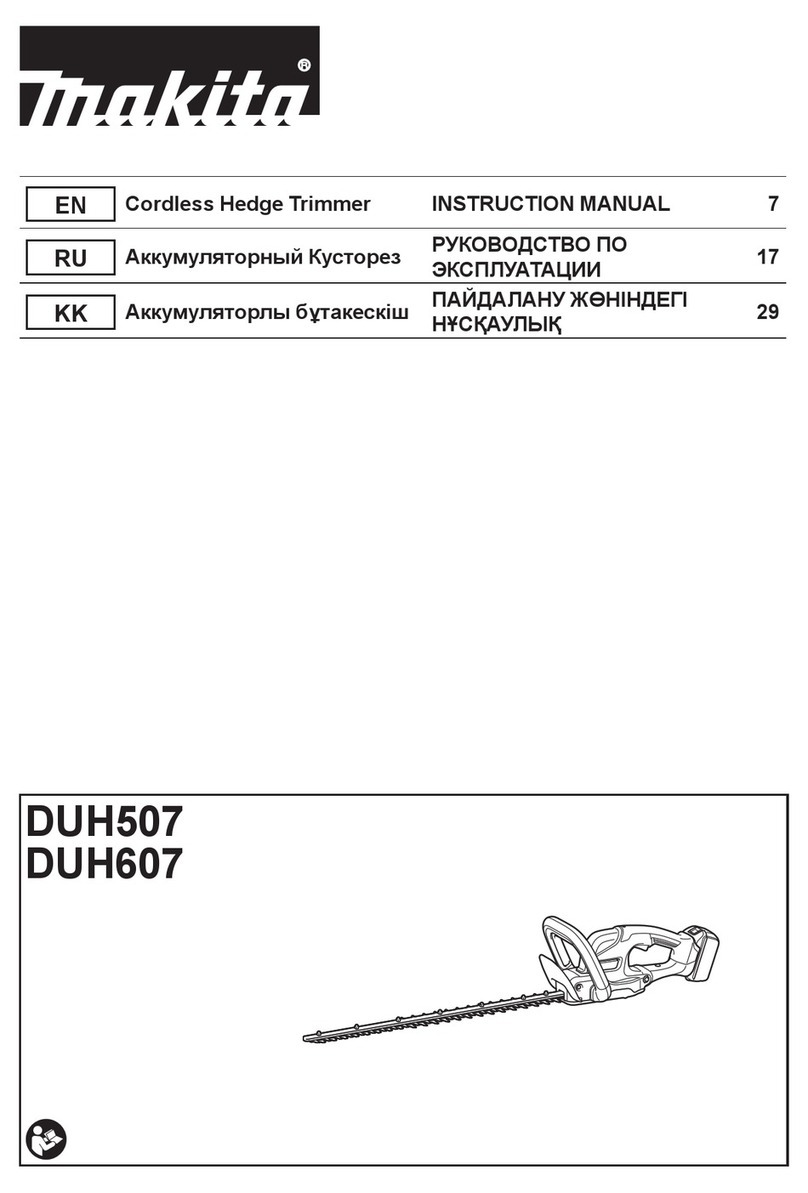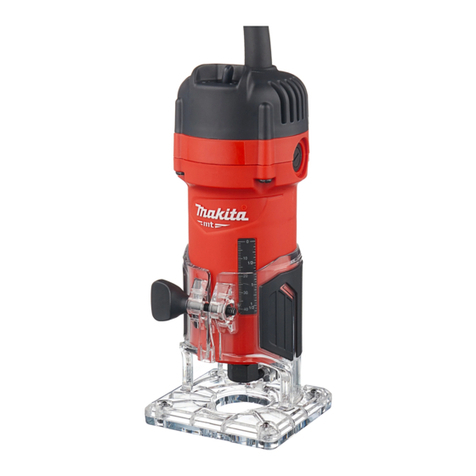
6ENGLISH
5. Never operate the tool while people, especially
children, or pets are nearby.
6. Before operation, examine the work area for
stones or other solid objects. They can be
thrownandresultinseriousinjuryand/orproperty
damage.
7. WARNING: Use of this product can create
dust containing chemicals which may cause
respiratory or other illnesses. Some examples
of these chemicals are compounds found in
pesticides, insecticides, fertilizers and herbi-
cides. Your risk from these exposures varies,
depending on how often you do this type
of work. To reduce your exposure to these
chemicals: work in a well ventilated area, and
work with approved safety equipment, such as
those dust masks that are specially designed
to lter out microscopic particles.
Electrical and battery safety
1. Do not expose the tool to rain or wet condi-
tions. Water entering the tool will increase the risk
of electric shock.
2. Do not use the tool if the switch does not
turn it on and o. Any tool that cannot be con-
trolled with the switch is dangerous and must be
repaired.
3. Prevent unintentional starting. Ensure the
switch is in the o-position before installing a
battery pack, picking up or carrying the tool.
Carryingthetoolwithyourngerontheswitchor
energising the tool that have the switch on invites
accidents.
4. Avoid dangerous environment. Don't use the
tool in dump or wet locations or expose it to
rain. Water entering the tool will increase the risk
of electric shock.
5. Do not dispose of the battery(ies) in a re.
The cell may explode. Check with local codes for
possible special disposal instructions.
6. Do not open or mutilate the battery(ies).
Released electrolyte is corrosive and may cause
damage to the eyes or skin. It may be toxic if
swallowed.
7. Do not charge battery in rain, or in wet
locations.
8. Recharge only with the charger specied by
the manufacturer. A charger that is suitable for
onetypeofbatterypackmaycreateariskofre
when used with another battery pack.
9. Use power tools only with specically desig-
nated battery packs. Use of any other battery
packsmaycreateariskofinjuryandre.
10. When battery pack is not in use, keep it away
from other metal objects, like paper clips,
coins, keys, nails, screws or other small metal
objects, that can make a connection from one
terminal to another. Shorting the battery termi-
nalstogethermaycauseburnsorare.
11. Under abusive conditions, liquid may be
ejected from the battery; avoid contact. If con-
tact accidentally occurs, ush with water. If
liquid contacts eyes, seek medical help. Liquid
ejectedfromthebatterymaycauseirritationor
burns.
Putting into operation
1. Before assembling or adjusting the tool,
remove the battery cartridge.
2. Before installing the battery cartridge, inspect
the tool for damages, loose screws/nuts or
improper assembly. If the cutting tool is bent
or damaged, replace it. Check all control levers
and switches for easy action. Clean and dry
the handles.
3. Never attempt to switch on the tool if it is dam-
aged or not fully assembled. Otherwise serious
injurymayresult.
4. Adjust the shoulder harness and hand grip to
suit the operator's body size if adjustable.
5. When inserting a battery cartridge, keep the
cutting attachment clear of your body and
other object, including the ground. It may rotate
whenstartingandmaycauseinjuryordamageto
the tool and/or property.
6.
Remove any adjusting key, wrench before turn-
ing the tool on. An accessory left attached to a
rotatingpartofthetoolmayresultinpersonalinjury.
7. The cutting tool has to be equipped with the
guard. Never run the tool with damaged guards
or without guards in place!
8. Make sure there are no electrical cables, water
pipes, gas pipes etc. that could cause a hazard
if damaged by use of the tool.
9. The condition of the cutting tool, protective
devices and shoulder strap must be checked
before commencing work.
Operation
1. In the event of an emergency, switch o the
tool immediately.
2. If you feel any unusual condition (e.g. noise,
vibration) during operation, switch o the
tool and remove the battery cartridge. Do not
use the tool until the cause is recognized and
solved.
3. The cutting attachment continues to rotate for
a short period after turning the tool o. Don't
rush to contact the cutting attachment.
4. During operation, use the shoulder harness if
supplied with the tool. Keep the tool on your
right side rmly.
5. Do not overreach. Keep proper footing and
balance at all times. Watch for hidden obsta-
cles such as tree stumps, roots and ditches to
avoid stumbling.
6. Always be sure of your footing on slopes.
7. Walk, never run.
8. Never work on a ladder or tree to avoid loss of
control.
9. If the tool gets heavy impact or fall, check the
condition before continuing work. Check the
controls and safety devices for malfunction. If
there is any damage or doubt, ask our autho-
rized service center for the inspection and
repair.
10. Take a rest to prevent loss of control caused
by fatigue. We recommend taking a 10 to 20-min-
ute rest every hour.
